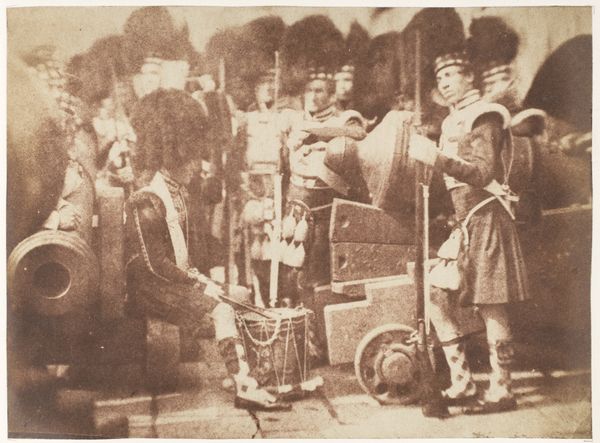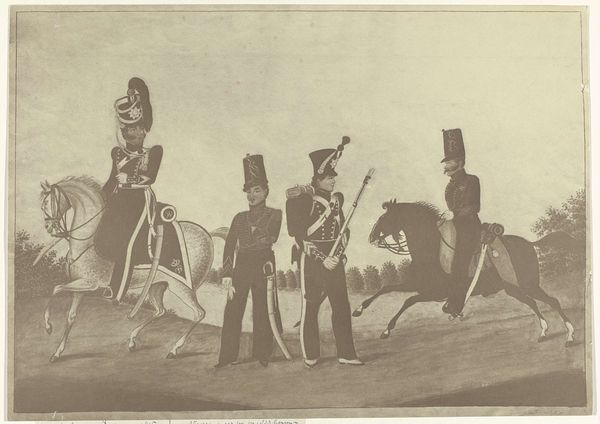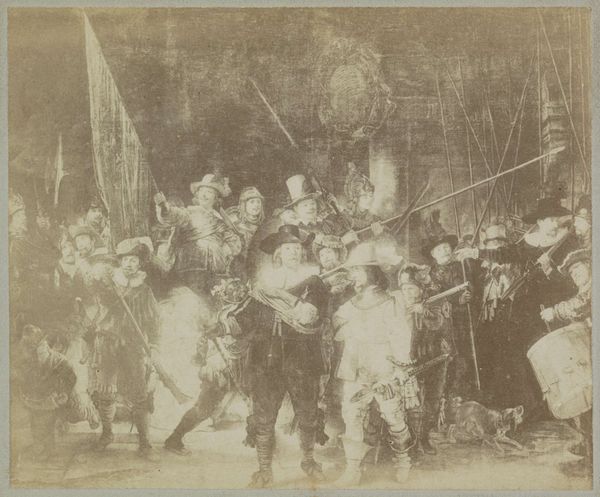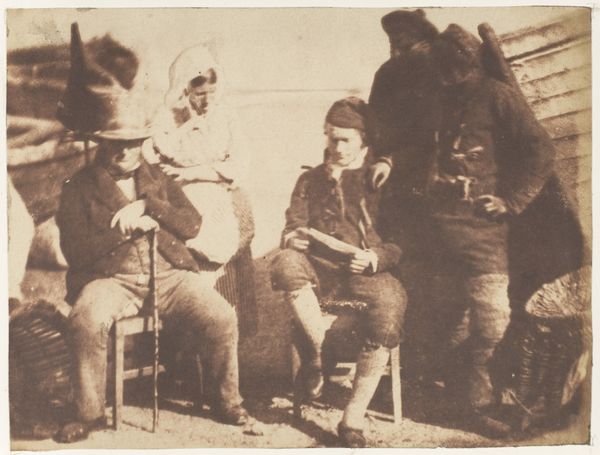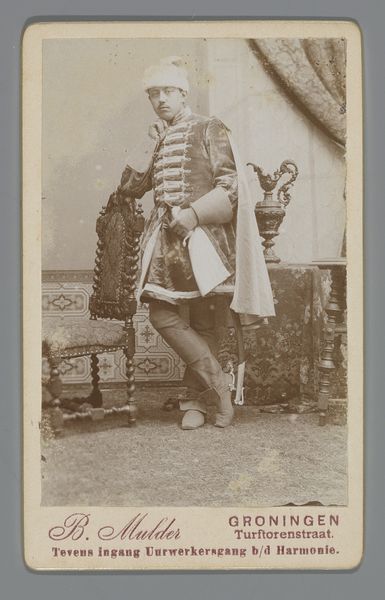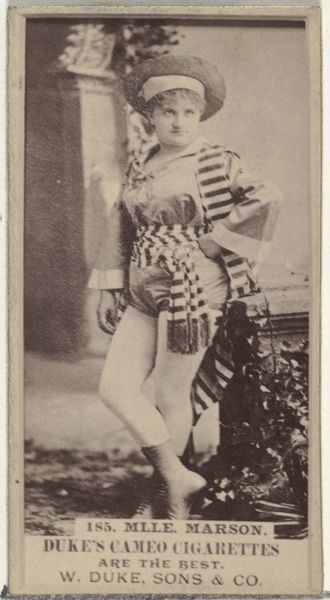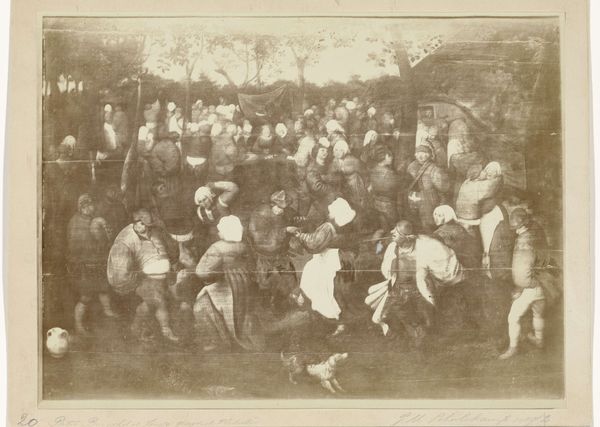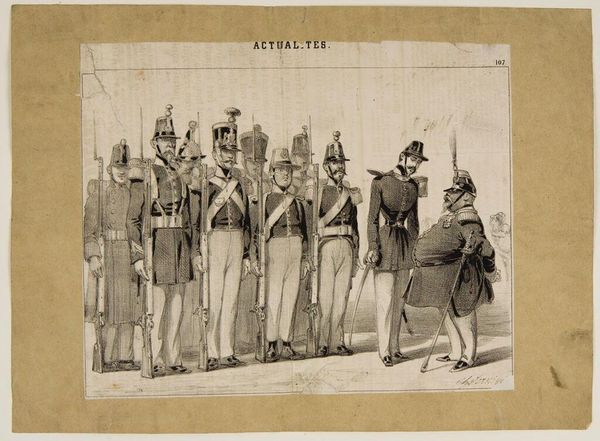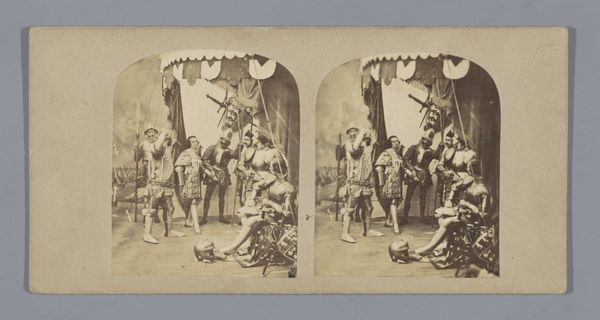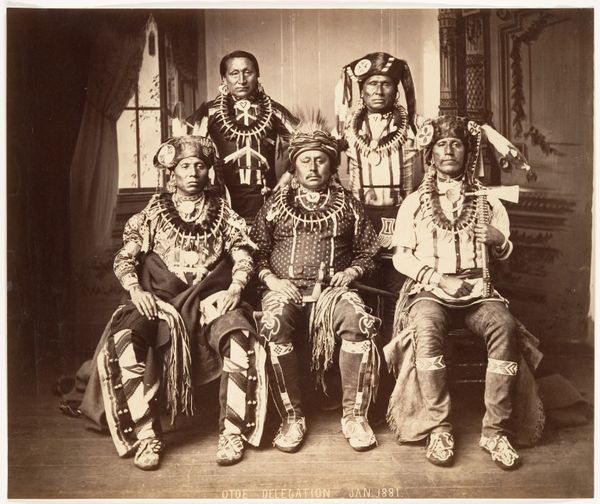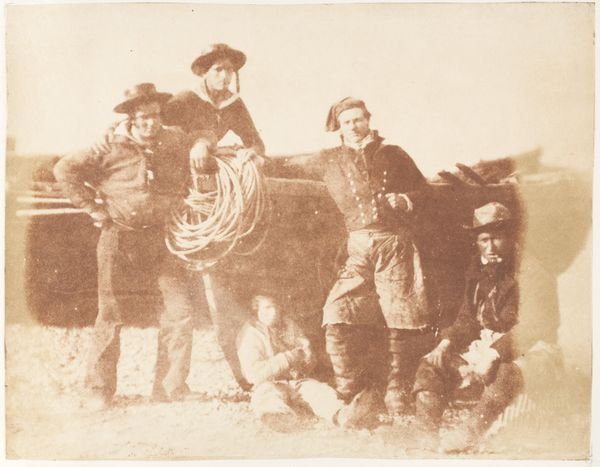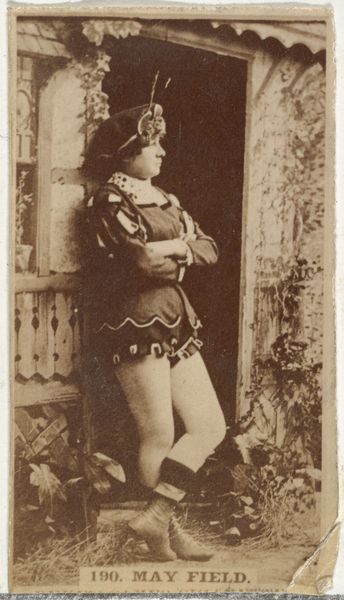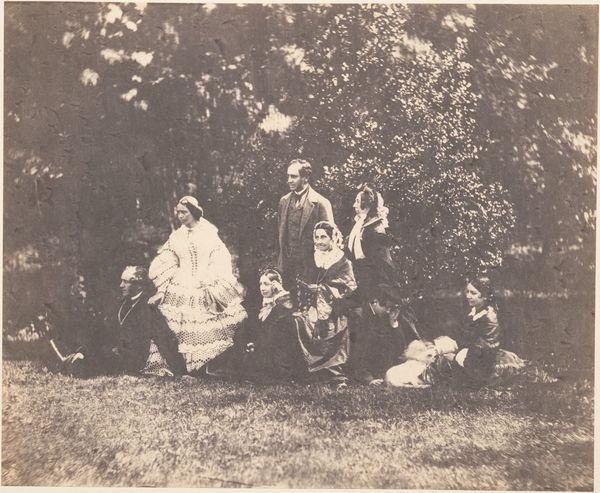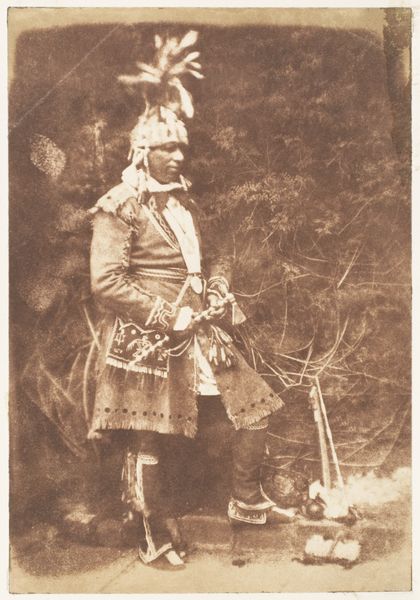
The 42nd Gordon Highlanders, Edinburgh Castle 1843 - 1847
0:00
0:00
print, daguerreotype, photography
#
portrait
#
medieval
# print
#
daguerreotype
#
photography
#
group-portraits
#
romanticism
#
scottish-colorists
#
men
#
history-painting
Copyright: Public Domain
This photograph of the 42nd Gordon Highlanders at Edinburgh Castle was made by Hill and Adamson in the 1840s, using a calotype process. The image is notable for its soft focus, and the way it captures the texture of the soldiers' uniforms and the rough stone of the castle. The calotype was an early photographic process that used paper coated with silver iodide, exposed in a camera, and then developed. This resulted in a negative image, which could then be used to make multiple positive prints. The appeal was the ability to produce multiple prints which allowed for wider distribution, connecting it to emerging capitalist markets. Hill and Adamson's image stands apart from painting and sculpture. It reflects the social context of the 1840s, when photography was emerging as a powerful tool for documenting the world. Photography democratized image-making, challenging traditional art forms and offering new ways to engage with the world. By considering the materials, processes, and social context of this photograph, we can better appreciate its full meaning and significance.
Comments
No comments
Be the first to comment and join the conversation on the ultimate creative platform.
